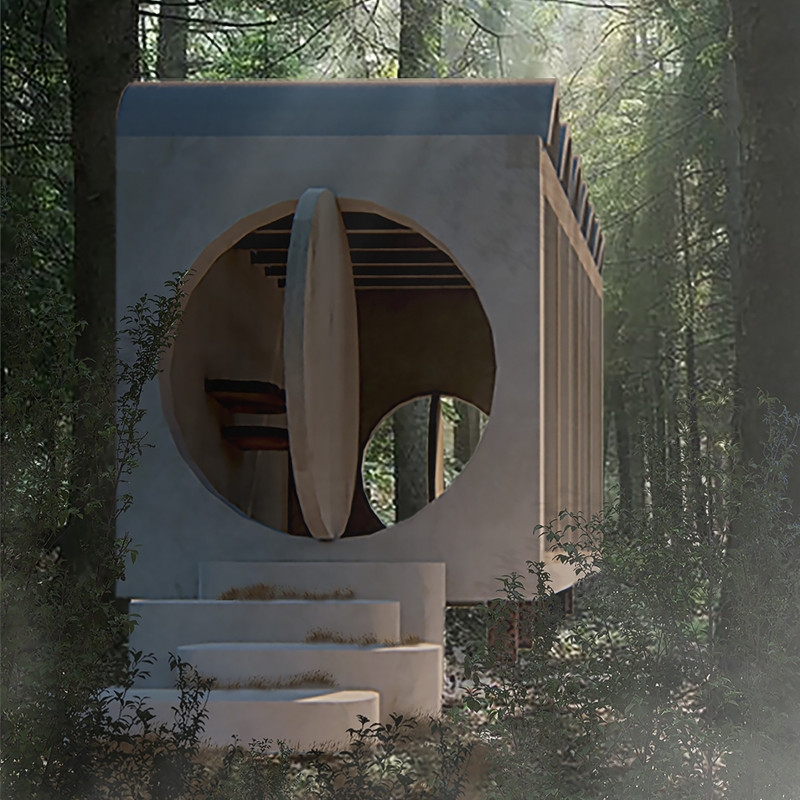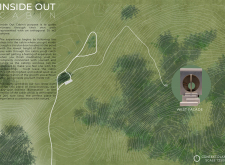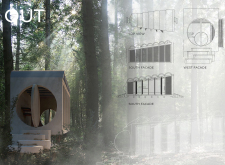5 key facts about this project
Inside Out Cabin is located in a peaceful natural setting, designed to be a retreat for personal reflection and a deeper connection with the outdoors. The concept revolves around guiding individuals through a meaningful experience within a straightforward square shape. This thoughtful arrangement invites users to engage in self-discovery while enjoying the surrounding environment.
Design Experience
The cabin features a low circular door at its entrance, symbolizing the beginning of an inward journey. Once inside, visitors experience a carefully thought-out layout that creates a sense of openness. The highest exit point represents personal growth achieved through meditation and reflection, marking the journey's completion.
Spatial Configuration
Non-linear vaults shape the interior of the cabin, reflecting the complexities of human thought and experience. These architectural elements are not just decorative; they also help distribute natural light throughout the space. This gentle lighting fosters a calm environment, making it suitable for quiet contemplation. The varying light patterns add character to each area, enhancing the connection between the cabin's interior and the natural world outside.
Material Considerations
Material choices play a crucial role in both aesthetics and sustainability. The cabin uses wood for the floors, doors, and windows, while mud walls are built using a Cobb construction method. This choice highlights a commitment to environmentally friendly practices while allowing the building to integrate well into its surroundings. Natural materials contribute to a relaxed and inviting atmosphere.
Adaptive Functionality
The design allows flexibility in how the space is used. Occupants can open or close doors and windows based on their needs for privacy or openness. This adaptability creates a soothing environment that balances seclusion with a strong connection to nature.
Inside Out Cabin offers a unique combination of materials and light that enhances the feeling of tranquility. Each detail is carefully integrated, inviting users to explore their thoughts and the world beyond the walls.






















































